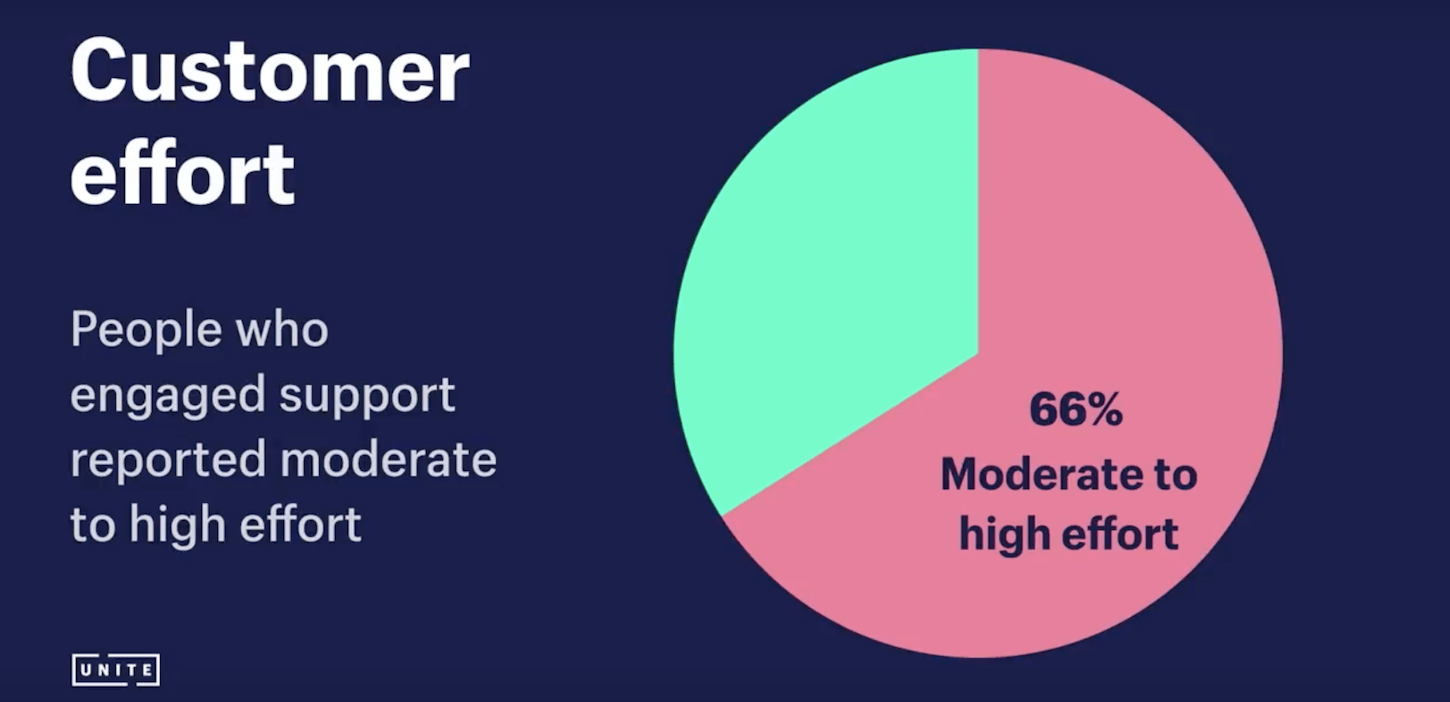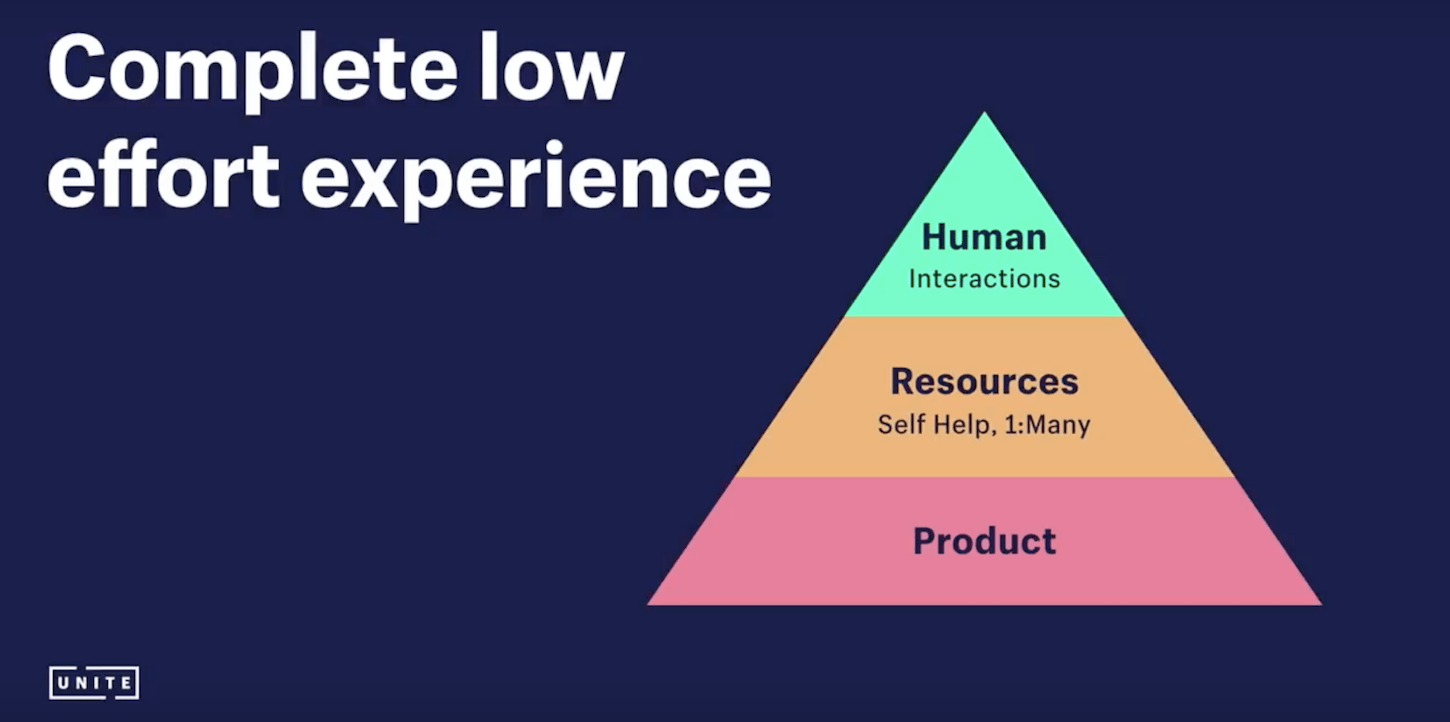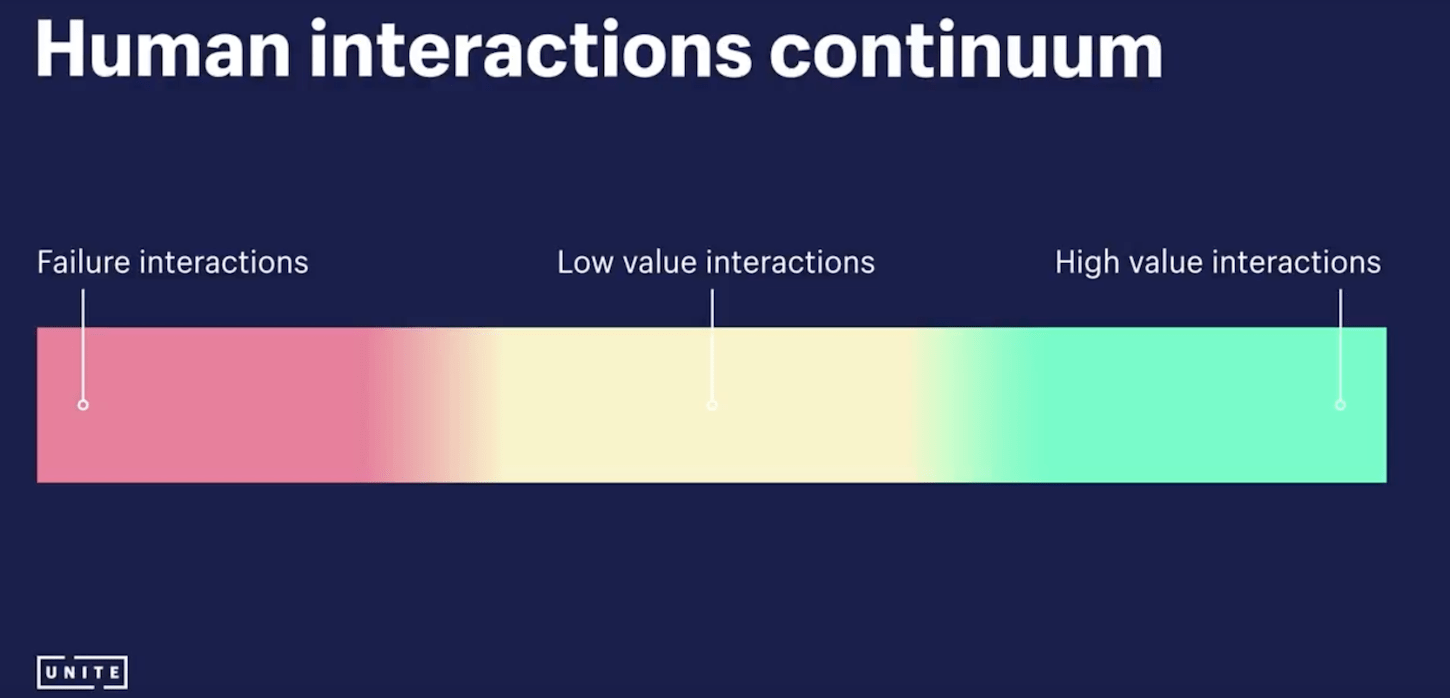As businesses grow from one or two person teams into small companies, customer support often falls by the wayside. We carry on doing what we’ve always done to support our customers, without growing our support system alongside our business. But this isn’t sustainable, and can hurt customer relationships.
Scaling your customer support system isn’t sexy, but it can have huge wins for your business . There’s a practical reality to it—if we don’t scale our support systems, work will always be on and the phone won’t stop ringing at dinner time. But scaling your support systems can also help keep your business costs low.
. There’s a practical reality to it—if we don’t scale our support systems, work will always be on and the phone won’t stop ringing at dinner time. But scaling your support systems can also help keep your business costs low.
Whether you are a big company or a one or two person operation, having a support system in place allows you to scale your customer service strategy without adding unnecessary staff members. Yes, there is a practical and cost saving element to it, but doing so also drives customer value and builds brand loyalty.
The topic of scaling support came up at Unite, our annual partner and developer conference. Roy Sunstrum, VP of Operations, gave a main stage talk on why a well-designed support system is integral to maintaining your service levels and driving customer value during growth.
In this post, we will help you apply Roy’s learnings to build a customer service strategy that can create better customer experiences with your product and business, and act as a competitive advantage.
Why reducing customer effort is key to scaling your support systems
CEB, the customer loyalty and insight group, found that two thirds of the time, customers experience high effort in support interactions.
The friction customers experience when dealing with a company is a big differentiator between brand loyalty or churn. The more likely they are to experience friction in a customer service interaction, the more it increases their disloyalty. And the customers that experience this friction are twice as likely to speak to their friends and family about it. To keep customers loyal, aim for easy and effortless experiences.

Low effort experiences aren’t only important in customer-to-support interactions; they matter in everything that sits between support and product. A low effort experience includes all your self-help resources and one-to-many offerings—it’s about how this whole experience comes together. And these are the experiences that determine a customer’s loyalty to your brand.

How do you know you’re successfully decreasing effort? It’s not easy to find causation or correlation between your actions and a better customer experience, because there are a lot of factors that influence customer effort.
However, measuring the impact of customer effort is difficult because there isn’t one metric in your analytics that can demonstrate a tangible decrease—especially short term. In the long term, however, reducing customer effort will help nudge big business metrics like adoption, loyalty, revenue growth, and profitability in the right direction. Just because measuring or reducing effort isn’t tangible right away, doesn’t mean there aren’t actions you should take right now to do so.
How to reduce customer effort in support interactions
To reduce customer effort, we first need to understand the type of interactions customers have with your brand. There are a lot of different human interactions you’ll have in the support department, but they generally fall into three buckets:
- Failure interactions: These are the conversations that no one wants to have. These include billing errors, product features not working, or system downtime.
- Low value interactions: This is when there’s a clarification or confirmation, where you’re helping the customer understand something.
- High value interactions: This is when the customer is pleased with what you’re doing, but looking at where they can take it next. This is where upsell opportunities live.

As a support leader, manager, or agent, you should always be looking to treat these three interaction types differently.
To reduce friction in a customer’s experience, you should prioritize reducing failure interactions. You can’t cut failure interactions out entirely, because you’re at the mercy of things you can’t control, such as features not working or system downtime. Instead, it’s more important to deal with them positively and constructively than to try to rule them out altogether. So while you should strive to lower the amount of failure interactions, understand that they’ll never go away completely.
You can also reduce customer effort in your low value interactions. These are an opportunity to provide self-help resources such as documentation, videos, and community to customers, to give customers an option to help themselves.
If we reduce failure and low value interactions, we can spend more time on high value interactions , where we can build relationships and trust with clients.
, where we can build relationships and trust with clients.
1. Scale and leverage self-help documentation to reduce friction
The majority of customers prefer to start with self-help, using guides or resources to solve their own issues:
- Forrester’s consumer survey about channel usage for customer service reported that the use of the help/FAQ pages on a company website for customer service increased from 67 percent in 2012 to 76 percent in 2014
- Microsoft’s Global State of Multichannel Customer Service Report found that more than 90 percent of all consumers expect a brand or organization to offer a self-service support portal or frequently asked questions (FAQ) page
You should try building out your self-help resources so you can avoid a lot of support requests altogether.
It is also important to stay on top of how valuable your self-help content is: while lots of self-help resources arm customers with important knowledge about your product, they rarely finish the support interaction. It should be your focus to make your self-help content and user documentation crystal clear, and keep it up to date. Conduct a self-help content audit monthly or at least quarterly, and look to see if:
- There’s anything out of date, whether that’s the written information or screenshots provided.
- There’s a trend in your analytics of short or overly long page-view times on particular pages. Maybe the instructions aren’t clear and your customers have to reach out for help.
- Your inbox is full of repeat questions or particular issues that consistently crop up. Look at how you can build a self-help page to tackle that problem and eliminate it from your inbox.
2. Offer live channels wisely
Most companies start at live channels. You probably have a phone number or even a live chat option on your website. When offering live help, aim to inform expectations:
- Display hours of operation to keep customers’ expectations in check. This is probably the most important aspect, because you don’t want a customer sitting on the phone for 20 minutes waiting for someone to answer, if your team have gone home for the day and won’t be back until the morning.
- Don’t offer support in multiple languages if you’re not ready. Whatever you offer your customers as additional language support, it’s vital it doesn’t come across as a second class service. When you’re ready to offer another language as a service, it must be a equally polished and professional as your original service.
You might also like: Expert Advice on How to 10x App Support.
4 ways to be strategic with your customer support offering
Use a strategy in line with solid tactics to support your customers, drive customer value, and build brand loyalty. Here are 4 tips to lower friction and customer effort.
1. Direct the right questions to the right channel
You can influence where your customers go with their questions, whether that’s phoning for help or looking at a self-help option. A strategic approach to your customer service strategy will define the best place to talk about domain name, billing, or payments.
The CEB recommends using the jobs to be done approach to customer support. The jobs to be done framework, by Clay Christensen in his book The Innovator’s Solution, looks into how consumers hire products to do things for them.
Christensen uses McDonald’s as a core example about why people ‘hire’ milkshakes in the morning for breakfast. The key takeaway from the piece of research is that folks want a filling breakfast that lasts more than 20 minutes, which they can consume with only one hand, and which helps combat boredom on their drive to work.
Customers look around for a product or service that they can ‘hire’ to get the job done.
This principle of jobs to done can also be applied to channels. For example, if you compare why a customer might choose social media over chat or voice, consider that the hired job in social media is to vent, whereas the hired job for a voice conversation is to discuss or explore.
If you can influence where your customers land and the support channel they choose by applying the framework of jobs to be done, you will see how greatly this influences customer satisfaction. It allows you to build a strategy for each channel.
For example, as irate customers tend to use social to vent, you need to have a strategy that offers support but doesn’t anger the customer more. So when a customer tweets angrily, don’t ask them to call in for help—instead, offer them help on the same channel. Asking the customer to change channels when they’re already angry will only increase their frustration. By dealing with the issue publicly if possible, you demonstrate great accountability. However, if it’s a billing issue or you need to get personal details from the customer, switch to a direct message.
Leveraging the strengths, weaknesses, and purpose of each of your service channels will help you better provide the right support to the right clients.
2. Use technology to help serve customers better
One such example is chatbots and automation. Chatbots often start in the self-help resources area of a website, and try to help a customer solve a problem. They can detect if they’re not meeting the customer’s expectations, and push the customer to a human interaction.
Live chat also simplifies things for customers, bringing help just a click away and saving your customer from searching your website for a contact form, email address, or phone number.

3. Consider a proactive customer support approach
When changes happen in your product, it can cause a bump in customer support requests. Informing customers of the impending change can help mitigate these requests.
There are many ways you can keep your customers informed about changes to your product.
- In-context messaging
- Social media
- Triggered events
- One-to-many newsletters
- Proactive calls
The timing of a piece of advice or information can be powerful for customer satisfaction and loyalty.
4. Track and record
There is real value in tracking and recording all your support interactions. If you’re still just one or two people, this is built into your offering and you don’t need to be very systematic yet. But as you grow and evolve and roles become more specialized, there is a bigger need to be systematic.
For example, at Shopify we have a team called the product support network. Their function is to be the connective tissue between the frontline support and the product teams. Small businesses don’t need to be this systematic.
That being said, everyone can benefit from tracking support. It gives you the ability to dive into the data and look for patterns or trends which can analyzed in your help desk or customer support software’s analytics. The data from your analytics is a great for informing your support strategy and where to get started.
Perhaps your help desk metrics are telling you you have a high average number of email replies until resolution. While some issues can be complex and merit a lot of replies, you should aim to cut down on the back and forth by using a strategy call next issue avoidance.
Next issue avoidance relies on proactively providing customers with the information they need to solve their problem. Typically, replies to support emails look something like this:
“Thanks for getting in contact! It sounds like you are experiencing an issue with X.”
With next issue avoidance, your reply would instead look something like this:
“Thanks for getting in contact! It sounds like you are experiencing an issue with X. If so, you’ll want to look at trying Y or Z to fix the issue. Below I’ll explain how to implement both of those fixes.”
Tackling each interaction with next issue avoidance in mind will help you cut down on back and forth, and get a customer to a resolution quicker. It’s a win-win for both customer satisfaction and your productivity.
You might also like: Post-Launch Services as a Deliverable: The Win-Win Approach.
Measure what will reinforce your business goals
You can measure the benefits of strong support structures and systems in two basic ways: minimizing cost and maximizing value.
If you’re looking at minimizing cost, you’ll look at things like minimizing interactions, call times, and wrap up times. If you’re looking at maximizing value, you’ll look at repeat contacts, first contact resolution, and customer retention.

These two factors—minimizing cost and maximizing value—are on the same spectrum. For example, limiting failure interactions causes the number of interactions to drop, but the interactions will increase in length because you now have the time and resources to have rich, impactful conversations with clients.
If you measured success only around minimizing cost, you’d think things were going in the wrong direction, but that really isn’t the case.
To illustrate this in action, let’s look at Shopify. In Fall 2015, Roy Sunstrum, VP of Operations for Shopify Plus, was doing a deep dive into the interactions of the Plus team. There wasn’t a lot information around the operational performance, like answer rates and wait times.
An initiative was launched to track wait times and call times—but there was a miscommunication. While focusing on dropping call times, the team was also accidentally dropping customer satisfaction, by spending less time on the phone with clients and, therefore, having fewer in-depth conversations.
“Our wait times and call times were all coming down, but so was our customer satisfaction,” says Roy. “What we had to do was put the stopwatch away and take the focus off time, and go back to adding value.”
What we had to was put the stopwatch away and take the focus off time, and go back to adding value.
Focus on metrics that will win you customers, not productivity ratings. Measure things that reinforce those business goals. Remember that meeting your business goals comes from a variety of metrics.
You might also like: Designing With Customer Service In Mind Above All Else.
How will you scale your support offering?
There are a lot of choices when it comes to your support offering. It varies greatly whether you are one or two people, or a whole department. Whatever you choose, ensure it complements your products and drives value.
Remember, reducing customer effort and friction is your biggest win, and data with careful analysis can inform your customer service strategy. Wherever you start, be deliberate in your support system design.
Read more
- What You Missed at Generate Conference 2014
- Raise Prices at Your Agency with this Step-by-Step Approach
- Build Your Ecommerce Business: Livestream
- 5 Retail Industry Trends to Get your Clients Excited about Shopify POS and Offline Selling
- Grow Your Business With This Free Book
- Learn from the Shopify Experts Who Won Build A Business
- 5 Practical Ways to Help Your Clients Deal With Supply Chain Issues
- How to grow your business by becoming an omnichannel expert
What steps have you taken to scale your support offering? Tell us in the comments below!

